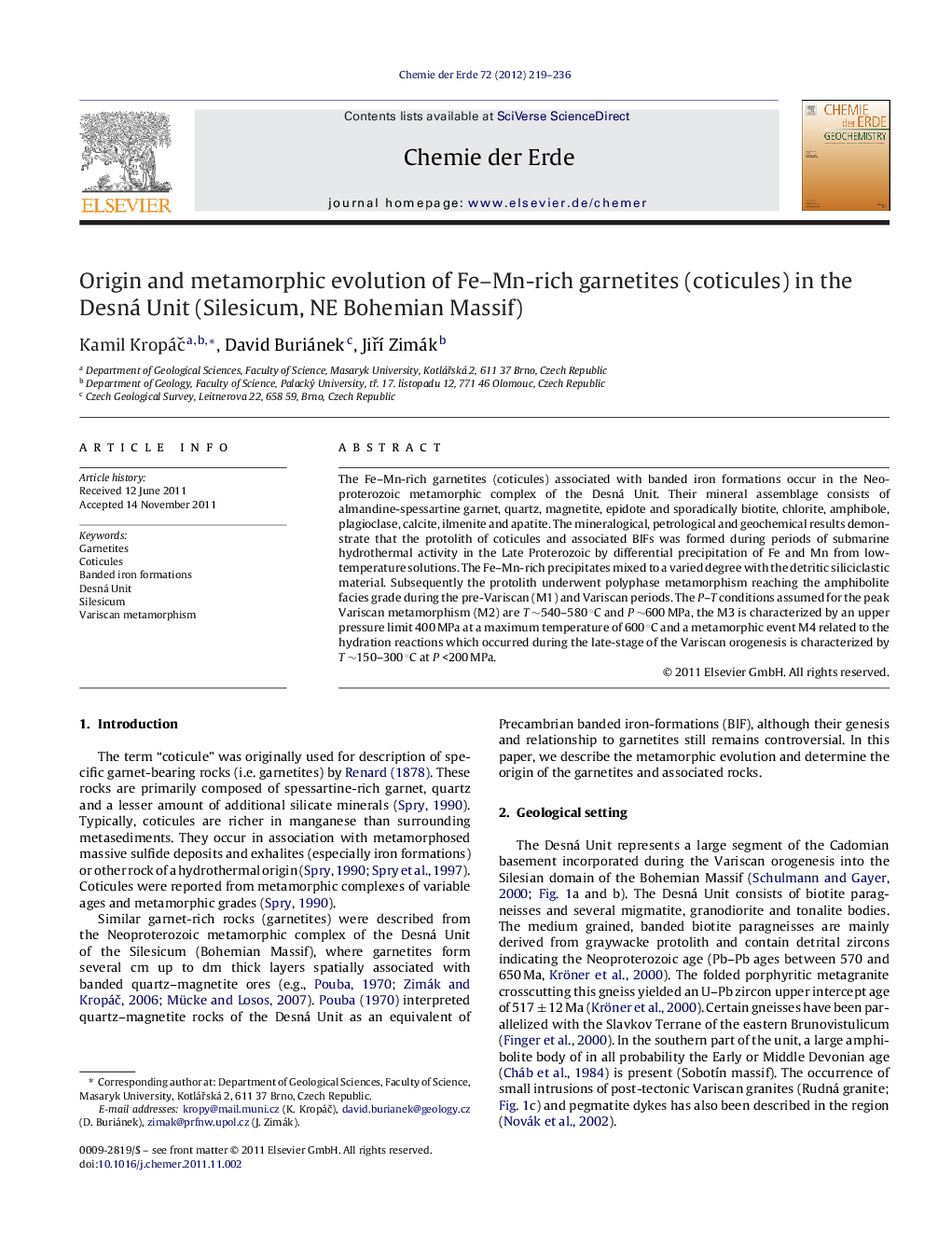| Article ID | Journal | Published Year | Pages | File Type |
|---|---|---|---|---|
| 4406866 | Chemie der Erde - Geochemistry | 2012 | 18 Pages |
The Fe–Mn-rich garnetites (coticules) associated with banded iron formations occur in the Neoproterozoic metamorphic complex of the Desná Unit. Their mineral assemblage consists of almandine-spessartine garnet, quartz, magnetite, epidote and sporadically biotite, chlorite, amphibole, plagioclase, calcite, ilmenite and apatite. The mineralogical, petrological and geochemical results demonstrate that the protolith of coticules and associated BIFs was formed during periods of submarine hydrothermal activity in the Late Proterozoic by differential precipitation of Fe and Mn from low-temperature solutions. The Fe–Mn-rich precipitates mixed to a varied degree with the detritic siliciclastic material. Subsequently the protolith underwent polyphase metamorphism reaching the amphibolite facies grade during the pre-Variscan (M1) and Variscan periods. The P–T conditions assumed for the peak Variscan metamorphism (M2) are T ∼540–580 °C and P ∼600 MPa, the M3 is characterized by an upper pressure limit 400 MPa at a maximum temperature of 600 °C and a metamorphic event M4 related to the hydration reactions which occurred during the late-stage of the Variscan orogenesis is characterized by T ∼150–300 °C at P <200 MPa.
